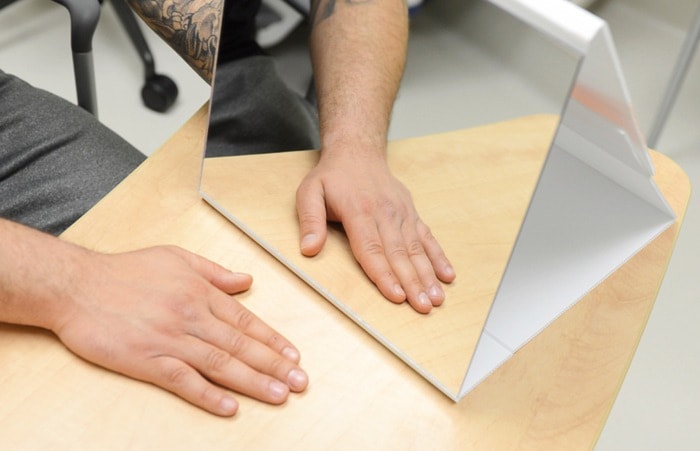 Ashoor Luka was in fighting trim back in 2005.
Ashoor Luka was in fighting trim back in 2005.
He had been a successful boxer in the Iraqi army, had beaten opponents in Jordan and Canada, and earned his first Golden Gloves title.
He also had a surprise left hook that broke at least one jaw (that opponent forgave him – the guy’s mother didn’t).
Then he broke his left wrist.
Four months later, Luka was confident enough to join a pick-up soccer game at a church picnic, and that’s when his world changed: A second break of the same wrist.
Bones were shattered, and pins were put in place to hold things together.
A second surgery to remove the pins didn’t improve chronic pain that was becoming unbearable.
The wrist, after being in a cast for eight months, was stiff and extremely painful to move in any way.
“If you asked me (what the pain level was) out of 10, it was 13.”
He also lost sensation.
“If I’d take a lighter to (the left hand), I wouldn’t even know,” he says.
He couldn’t even lift a plate of food or a glass of water. Most of the time, he just kept his left hand in his pocket.
“My whole arm became weak from just not using it. What can I say? My life was ruined the day I broke my wrist – sports-wise, work-wise, everything.”
After the last surgery in 2010 provided no relief, the surgeon told him there was nothing left to do.
“That was my last chance.”
Not quite. The long-term cycle of pain or fear of pain during movement could only be broken with the right therapy, and that’s where Roland Fletcher came into play.
The physiotherapist based at the Pain Clinic at the Jim Pattison Outpatient Care and Surgery Centre introduced him to the Mirror Box, a novel form of physiotherapy that once again changed his life, this time for the better.
The mechanics of the concept are simple, as long as the patient allows himself to be tricked – as Luka did.
What he found placed in front of him was simply a three-sided corrugated plastic box with a mirror on one side.
Luka was asked to cover up his left and right arm tattoos to make both arms look identical; other patients are told to remove watches and rings.
He put his non-functioning left wrist inside the box and kept his right one outside.
 Photo by Boaz Joseph at right: Ashoor Luka used a mirror box to cure the chronic pain in his broken wrist with the help of physiotherapist Roland Fletcher (centre).
Photo by Boaz Joseph at right: Ashoor Luka used a mirror box to cure the chronic pain in his broken wrist with the help of physiotherapist Roland Fletcher (centre).
While his right wrist moved in front of him, he saw the “left” one, a reflection of the right wrist, do the same thing.
Basically, his brain saw his left hand moving. Slowly, in the first session, it actually did, inside the box.
“This needs to be set up so the brain really falls for the illusion,” explains Fletcher, who has seen more than a dozen patients recover using the mirror box.
A formerly skeptical Luka was flabbergasted after just 30 seconds.
He saw his left wrist move on a phone video that Fletcher took, and then left to tell everybody he knew about what had happened.
“I was like a kid who just got his Christmas wish.”
Over the past several months, Luka has been using a Mirror Box at home for further exercise, but feels essentially back to normal.
He calls it his “healing box” and introduces it to any new house guest.
He even used it recently for a sprained ankle.
Fletcher explains that the Mirror Box is the third stage of this new type of therapy for patients with Chronic Regional Pain Syndrome (CRPS) or phantom limb pain.
The first stage is showing people pictures of limbs; it’s done because some people with CRPS or phantom limb pain have trouble identifying left- or right-side limbs in pictures (the image is associated with pain conditions).
The second stage is having the patients imagine moving their affected limb – the imagination is often a source of pain in itself.
“These treatments are really aimed at training the brain,” explains Fletcher. “It’s about trying to reduce the threat value.”
Today, Luka is betting back into shape. He recently lost 15 lbs. and can do 30 chin-ups in one set.
Wrist pain, out of 10: Zero.
bjoseph@surreyleader.com
Next week: Healing the machines
At SMH, electronic 'patients' need care too
More in the series:
